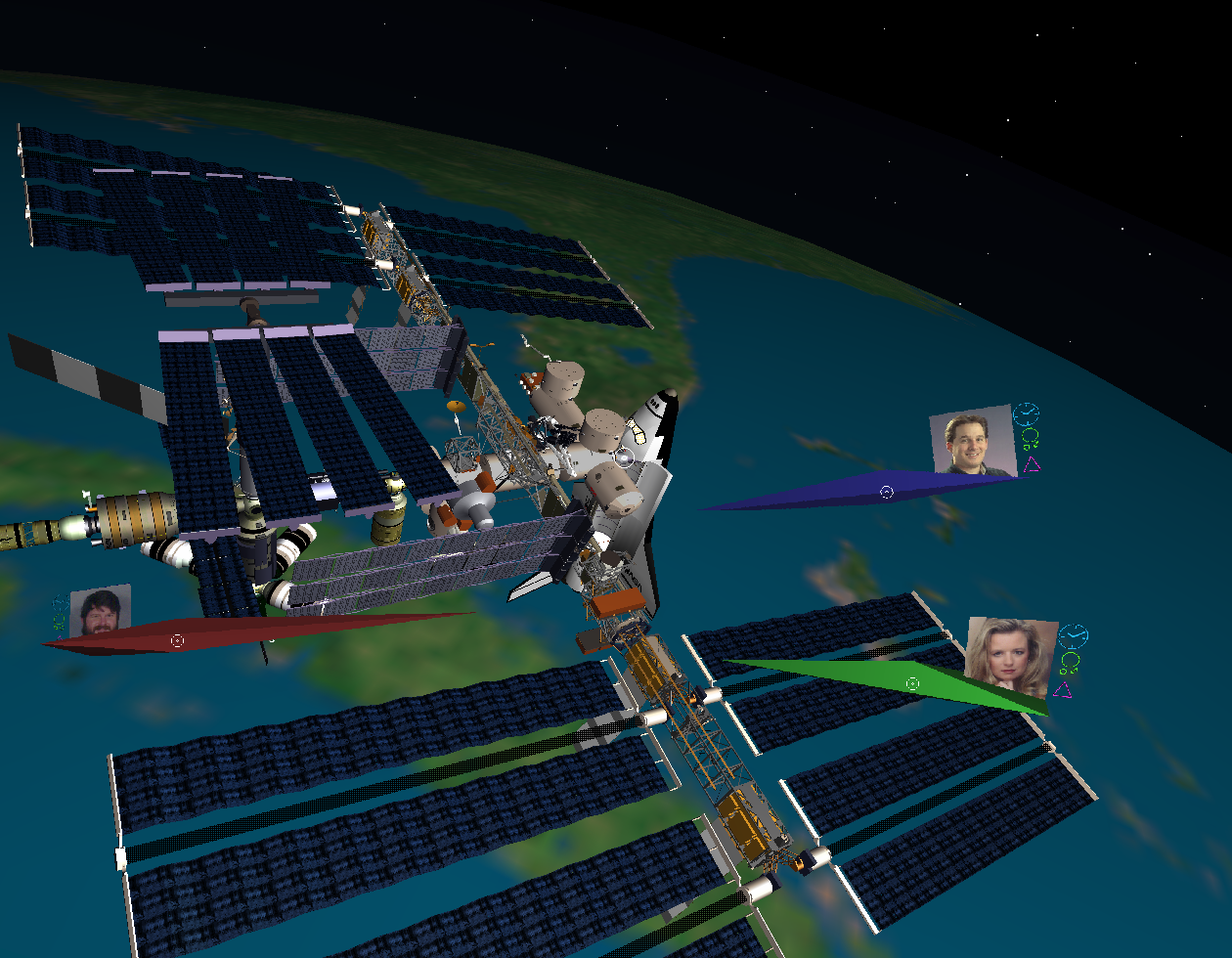|
... II. The Framework ...
values

 paradoxes
paradoxes
|
 Figure 33. The software framework Continuum Resources used, MuSE (Multi-sensory User Environment),
included crafts which allowed a user to navigate to specific locations in the
Virtual Reality World, and to provide comments while other participants kept a visual context.
Figure 33. The software framework Continuum Resources used, MuSE (Multi-sensory User Environment),
included crafts which allowed a user to navigate to specific locations in the
Virtual Reality World, and to provide comments while other participants kept a visual context.
Virtual environments provide a much better computer-human interface for evaluating complex interrelated data volumes.
These environments allow one to engage their senses, including sight, sound, and haptics. Visual queues are particularly strong in these virtual environments,
including experiencing peripheral vision, binocular or stereo views, and user occlusion where one has a sensation of different surfaces coming together.
The avatars, or virtual people users create in virtual places like Second Life,2.80 are logical extensions of the MuSE craft.
Hearing and speech queues include voice command and control, speech recognition, data voices, and three-dimensional audio. Haptics, or
feedback related to touch and motion and balance, include head tracking, as well as temperature, pressure, and texture feedback.
It seems a paradox these tools developed by science are currently being used and experimented with by youth and
by those who want to push sexual and perversion boundaries, just as the world-wide-web was greatly expanded as a means of distributing pornography.
As with most technologies, the virtual reality tools can be used for both the uplifting and the degrading. I anticipate the use of these tools will be used more
and more to integrate data, and to build bridges across the science-religion matrix over time.
|
timedex

 infinite grid
infinite grid
-096-
|